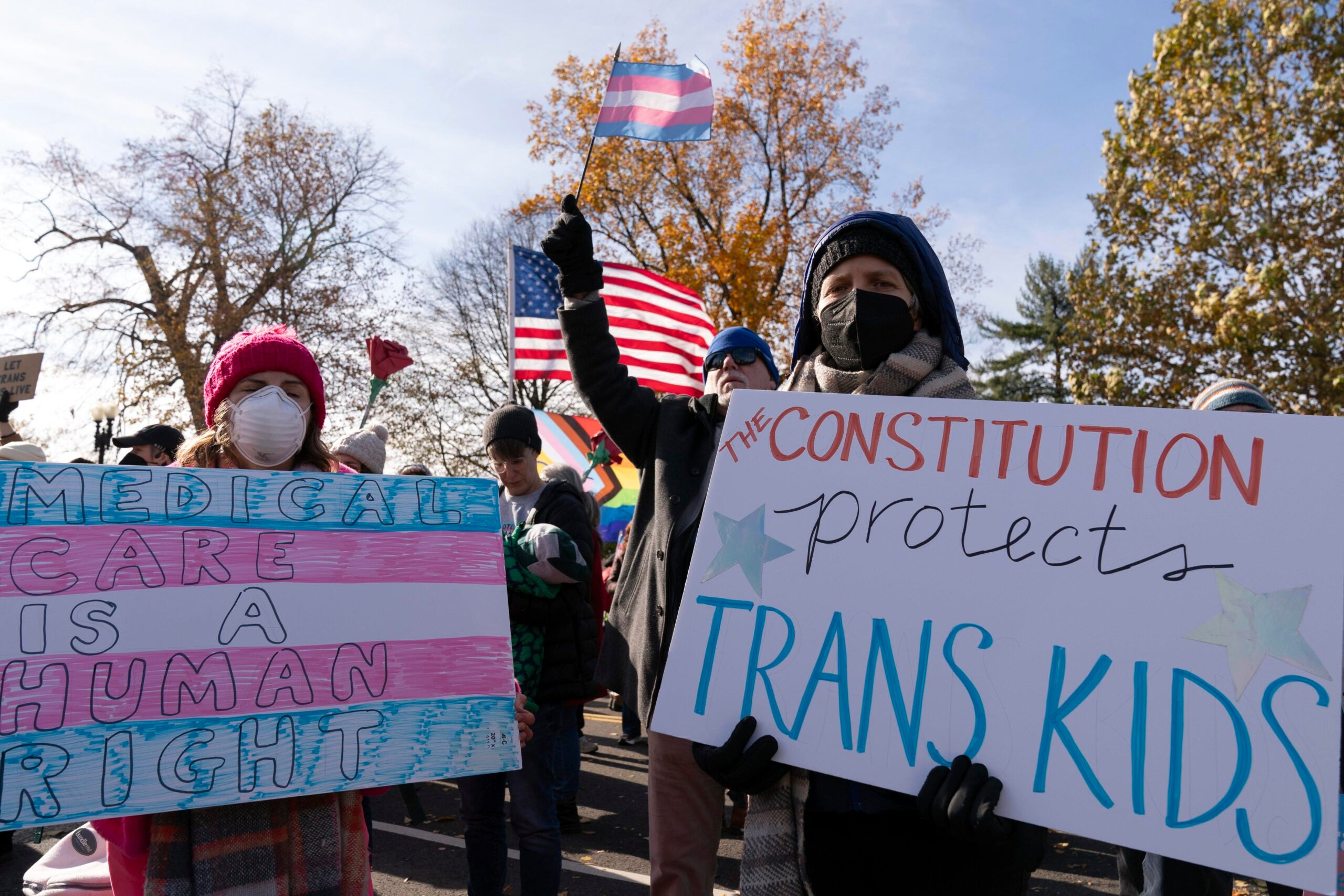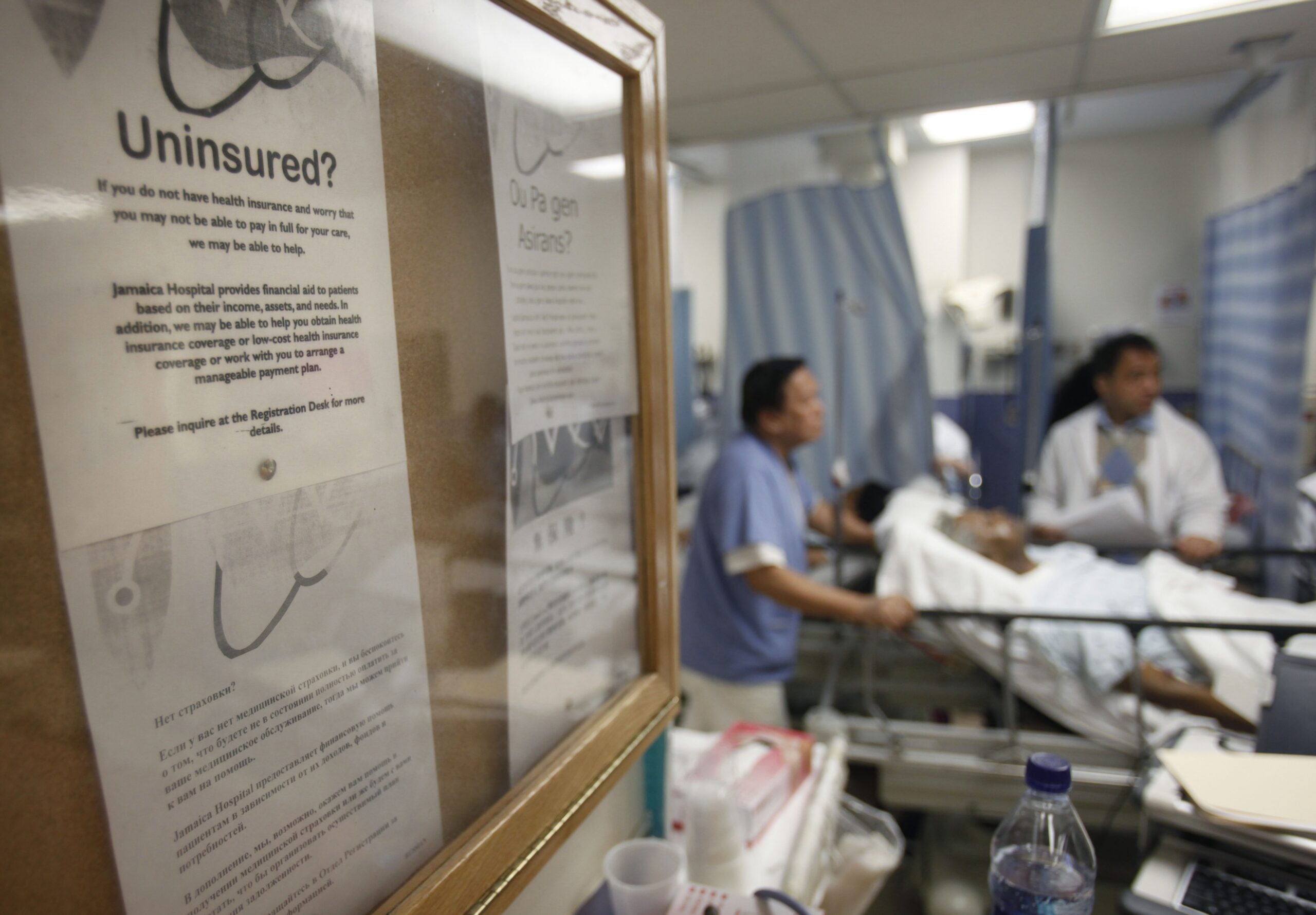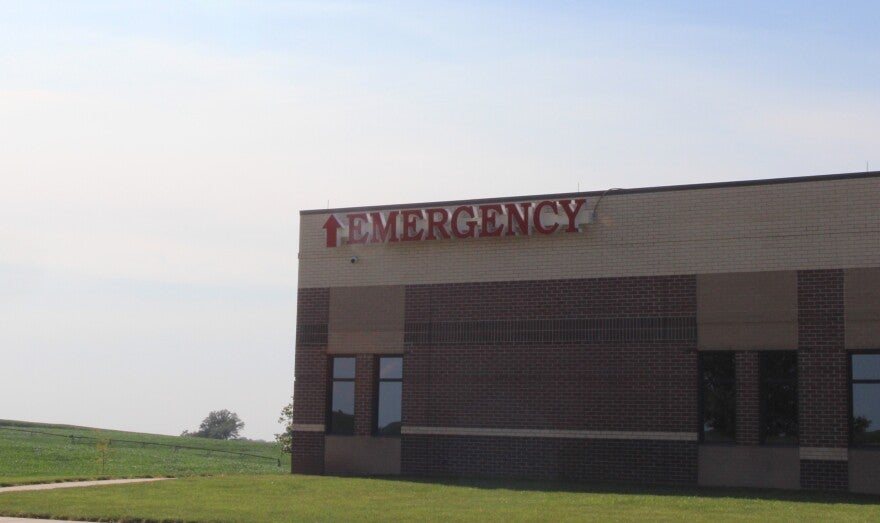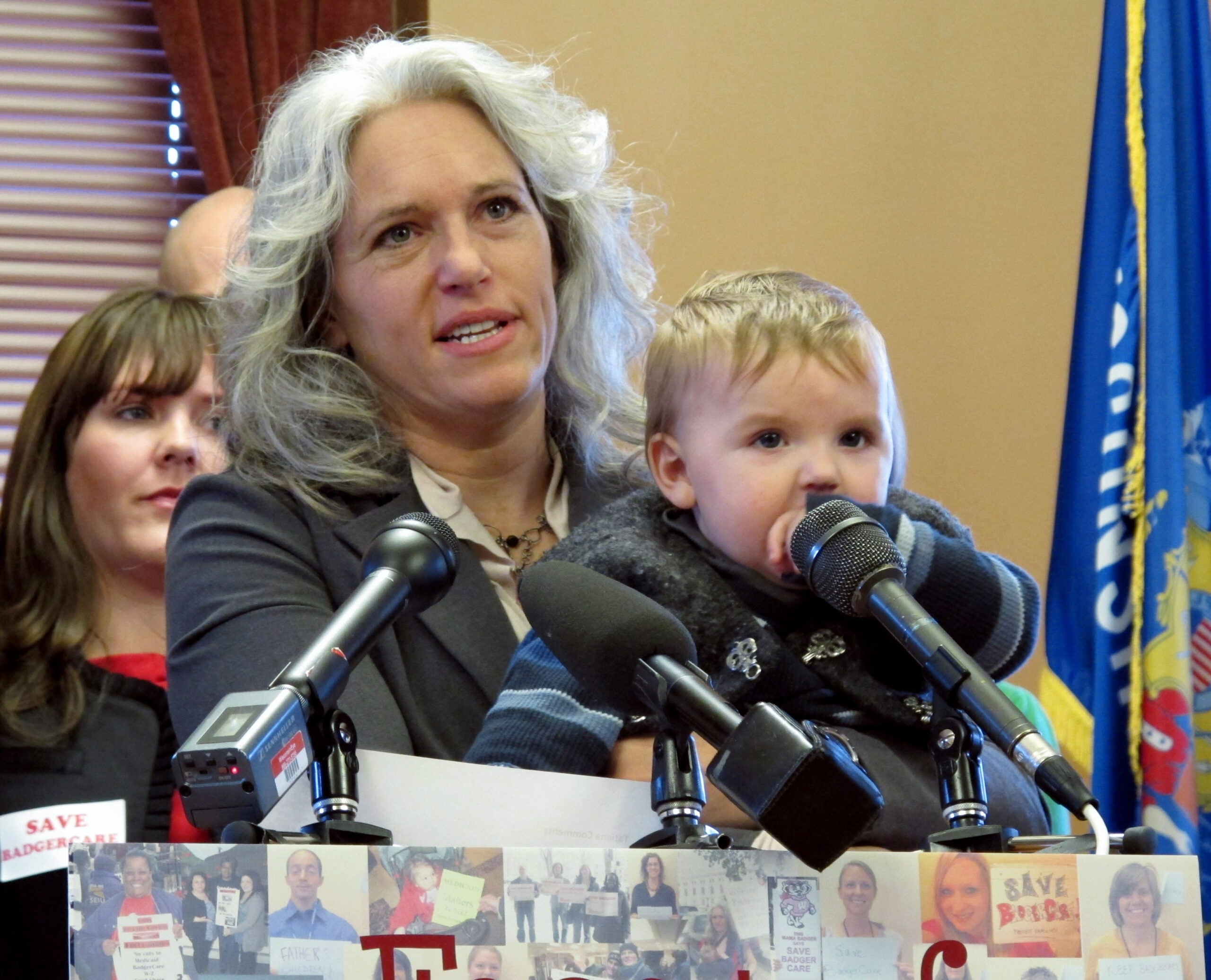This story was produced by Wisconsin Watch and WPR as part of the NEW (Northeast Wisconsin) News Lab, a consortium of six news outlets.
A family stood outside the doors of St. Francis Community Free Clinic at 4:55 p.m. on a recent Monday, five minutes before it was set to open.
A volunteer receptionist switched on the Oshkosh, Wisconsin, clinic’s “open” sign and welcomed them inside. Within minutes, more patients filed into the waiting room. Volunteers called people back to see Dr. Weston Radford on a first-come, first-served basis.
News with a little more humanity
WPR’s “Wisconsin Today” newsletter keeps you connected to the state you love without feeling overwhelmed. No paywall. No agenda. No corporate filter.
The clinic technically closes at 7 p.m. on Mondays, but Radford, who volunteers here weekly, said he often stays to treat patients past 8 p.m. — 14 hours after starting his workday as an internal medicine doctor at a private clinic nearby.
Still, the free clinic in its limited hours can’t reach everyone who needs it, including many who lack adequate health insurance.
“Health care is still a big need that we’re not really filling,” Radford said.
Health care is on the minds of plenty of Wisconsin residents ahead of the November election.
More than two dozen people who responded to WPR’s America Amplified project said they want politicians to prioritize health care access. Eight called for expanding access to Medicaid, the joint state and federal aid program to help low-income residents afford care.
Wisconsin is home to more than 1.2 million Medicaid recipients and an estimated 310,000 people who lack insurance.
Voters weighing their options for president have heard little from former President Donald Trump, a Republican, or Vice President Kamala Harris, a Democrat, about Medicaid policy. Still, their past records and party affiliations paint drastically different possibilities for the program after November, according to the health policy research firm KFF.
“Medicaid and its future, whether it faces existential threats, will depend on the outcome of this fall’s federal election,” said Edwin Park, a public policy professor at Georgetown University.
Trump previously pushed Medicaid cuts
Residents could lose Medicaid access, experts say, if Trump as president successfully revives his past proposals to shrink the size of the program — leaving more low-income adults reliant on busy clinics like St. Francis.
Project 2025, a plan for a second Trump administration published by the far-right Heritage Foundation, including chapters written by former Trump administration officials, proposes major cuts to federal Medicaid spending and toughened eligibility requirements.
Those proposals align with Trump’s track record. His administration increased scrutiny over eligibility for recipients, allowed states to add work requirements and proposed trimming around $1 trillion over 10 years from the federal Medicaid budget — cuts that Congress did not pass in 2017.
Nevertheless, Trump has tried to distance himself from Project 2025.
“Only President Trump and the campaign, and NOT any other organization or former staff, represent policies for the second term,” Danielle Alvarez, a senior adviser for Trump’s campaign, wrote in a statement to WPR and Wisconsin Watch.
The campaign did not respond to questions about whether Trump supports Project 2025 proposals to limit state Medicaid funding through block grants and impose lifetime limits on benefits.
“President Donald J. Trump is unwavering in his mission to lower costs for seniors and protect Social Security, Medicare, and Medicaid,” Jacob Fischer, a Wisconsin spokesperson for Trump’s campaign, told WPR and Wisconsin Watch.
A 16-page Trump policy plan promises protections for Medicare, the government health coverage for seniors and adults with disabilities, but never mentions Medicaid.
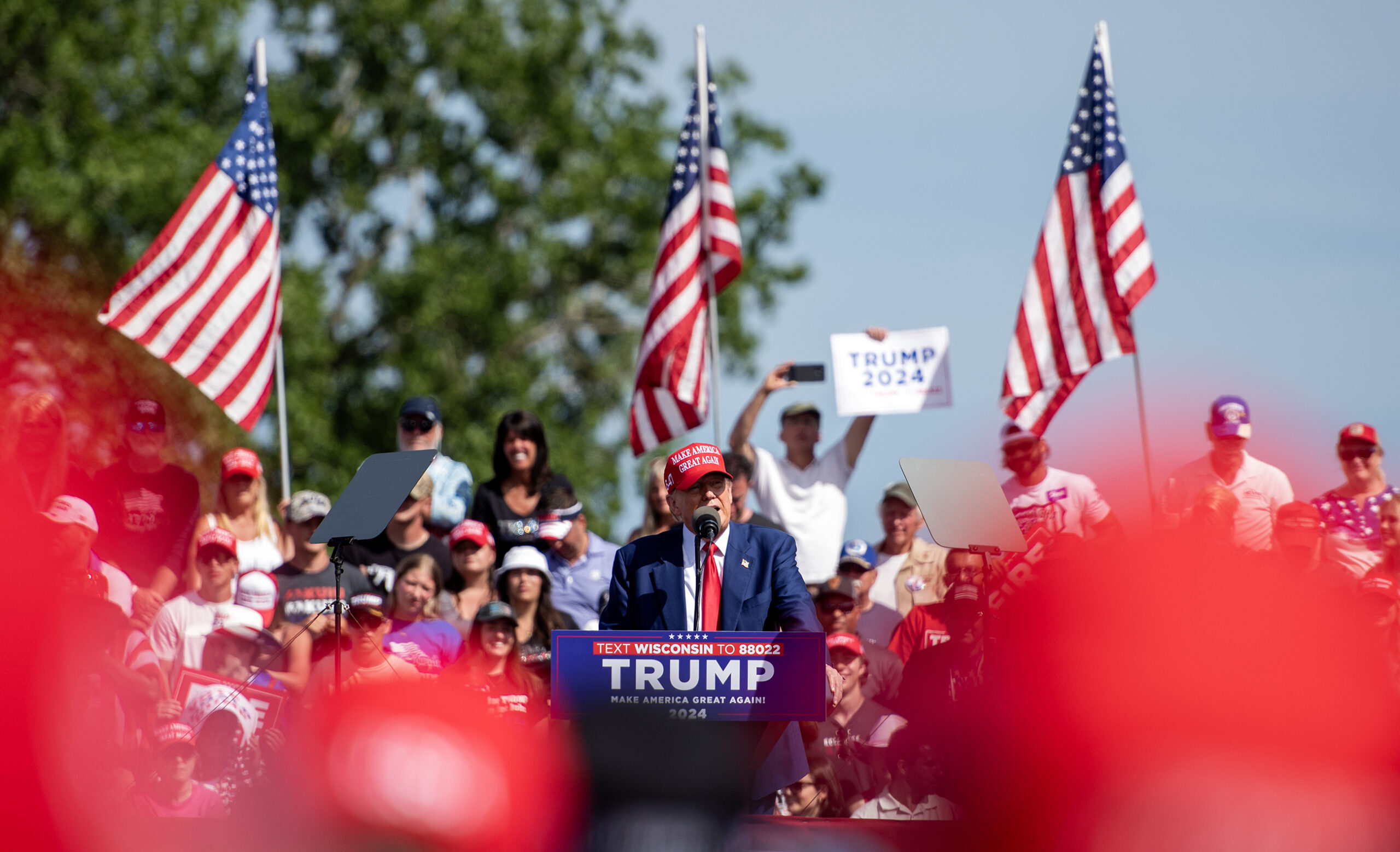
Harris touts high Medicaid enrollment with few specifics
Meanwhile, an 82-page Harris campaign document touts record-high coverage levels during her administration with President Joe Biden, but it doesn’t articulate specific Medicaid policies.
A Harris campaign spokesperson did not directly answer when asked about specific Medicaid proposals.
“Donald Trump is campaigning on a promise to repeal the Affordable Care Act and would spike costs under his extreme Project 2025 agenda, a stark contrast from Vice President Kamala Harris’ plan to take on Big Pharma and bring down health care costs for families across Wisconsin,” Brianna Johnson, the campaign’s Wisconsin spokesperson, responded via email.
Harris pushed a more dramatic health care overhaul in 2019 while running in the Democratic presidential primary. She cosponsored the failed “Medicare for All” bill, which would have granted Americans universal coverage to replace private-pay insurance and Medicaid.
Harris has since sought to distance herself from Medicare for All. Trump has attacked Harris for having “flip flopped” on what his campaign calls a “socialist” proposal, and he has spread misleading claims about what it would have meant for immigrants who entered the country illegally.
Harris does not mention Medicare for All in her current platform. She instead describes plans to bolster Medicare and the Affordable Care Act, commonly known as “Obamacare” — a law Trump has repeatedly pushed to repeal.
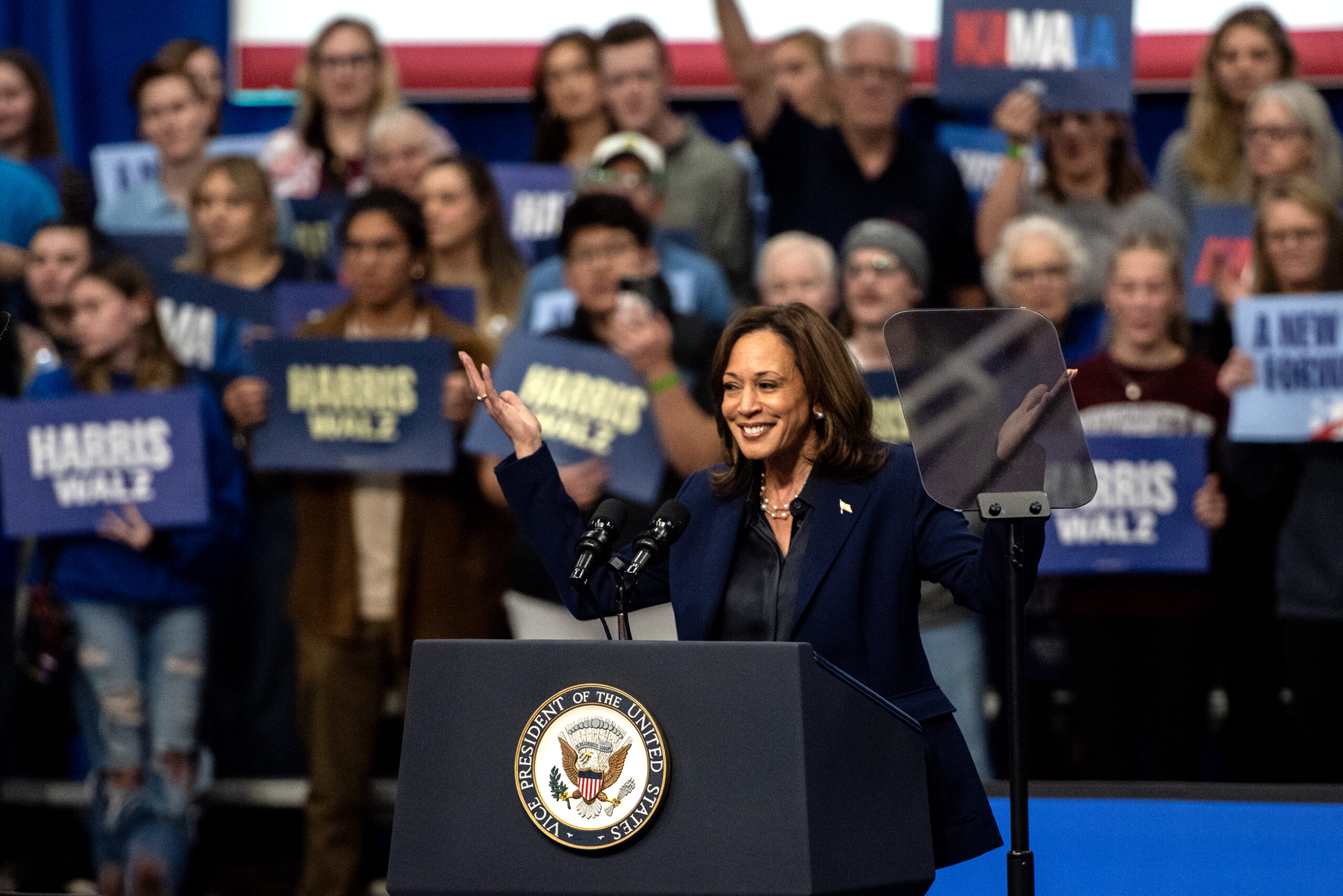
What does Medicaid policy mean for Wisconsin?
Wisconsin has a smaller proportion of uninsured residents than most states, but it remains among just 10 that haven’t expanded Medicaid to cover adults below 138% of the federal poverty line, around $20,800 a year for a single adult.
Adopting expansion would allow Wisconsin to extend government coverage to up to 90,900 additional adults and reap a net benefit of $1.7 billion over two years, according to a Wisconsin Policy Forum estimate.
Trump’s Affordable Care Act repeal efforts would have ended Medicaid expansion nationwide. The federal government can’t force states to expand coverage, but Congress during the Biden-Harris administration approved financial incentives to encourage expansion.
Wisconsin’s Republican-led Legislature rejected the most recent expansion proposal. Legislators have argued it would cause more residents to overly rely on the government, increase private insurance costs and burden future taxpayers.
Republican expansion critics point out that of the states that haven’t expanded Medicaid, Wisconsin is the only one without what some call a coverage gap.
That’s because the state’s Medicaid program covers low-income adults making up to the federal poverty level — the same point at which they qualify for subsidized plans on the federal Health Insurance Marketplace.
But Medicaid is seen as more comprehensive coverage than Marketplace options. Wisconsin’s Medicaid program covers dental care. But a Marketplace enrollee may need to pay an extra premium for dental coverage.
Two-thirds of respondents in a KFF poll of non-expansion states, including Wisconsin, said they favored expansion.
While voters in six Republican-led states approved Medicaid expansion through ballot initiatives since 2020, Wisconsin voters lack the ability to put referendums on the ballot.
Some experts see Wisconsin’s new electoral maps as a potential path for expansion.
This is the first election after the Wisconsin Supreme Court ordered lawmakers to draw new state Assembly and Senate district boundaries. The new maps create the possibility of Democrats gaining a majority in the state Assembly due to more competitive districts.
While a Democrat-led Senate remains unlikely, control over one chamber could still move expansion debates forward, said Philip Rocco, an associate professor of political science at Marquette University.
“Even if there’s not a victory immediately, it might create some political momentum for one to happen eventually,” Rocco said.
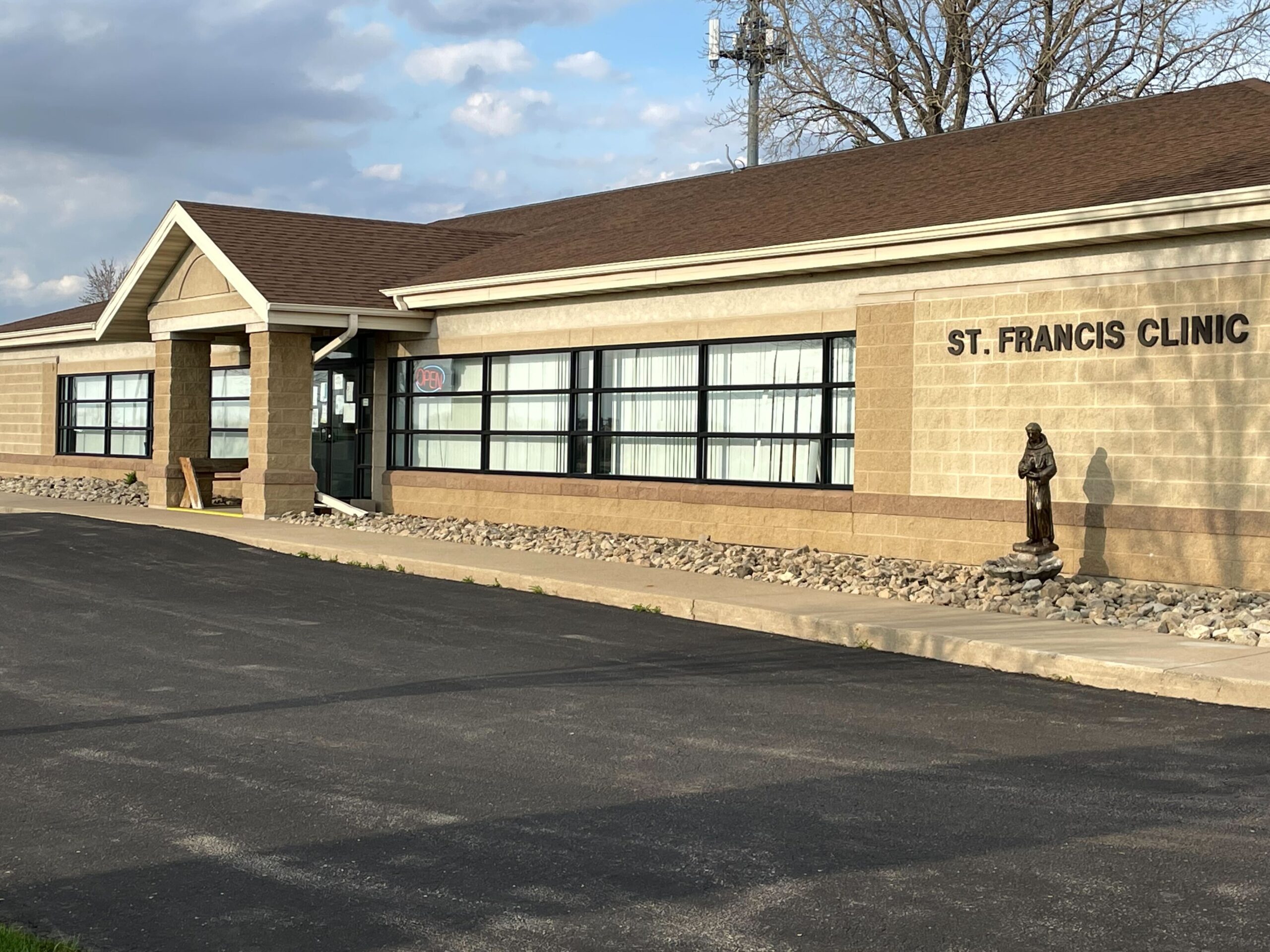
Radford isn’t sure why Wisconsin hasn’t expanded Medicaid, but he remains hopeful.
It would ease some of his work at his day job at the private clinic. Having more people on Medicare or Medicaid could decrease worries about denials or big out-of-pocket costs.
“It’d be nice just to be able to treat the people what we think medically is the best for them,” Radford said.
Even under expansion, plenty of Wisconsin residents will still need to visit free clinics like St. Francis.
‘We just take care of them’
Each week Radford sees patients who lack adequate private insurance, are in between coverage or can’t qualify for Medicaid because of their citizenship status.
Such needs aren’t new. Radford’s dad volunteered at St. Francis for around 30 years, spanning several presidential administrations.
While health care policies have changed over time, the clinic’s mission hasn’t. No one at the front desk asks questions about insurance or other types of payment. No one gets turned away.
“People got to be seen,” Radford said. “So we just take care of them.”



